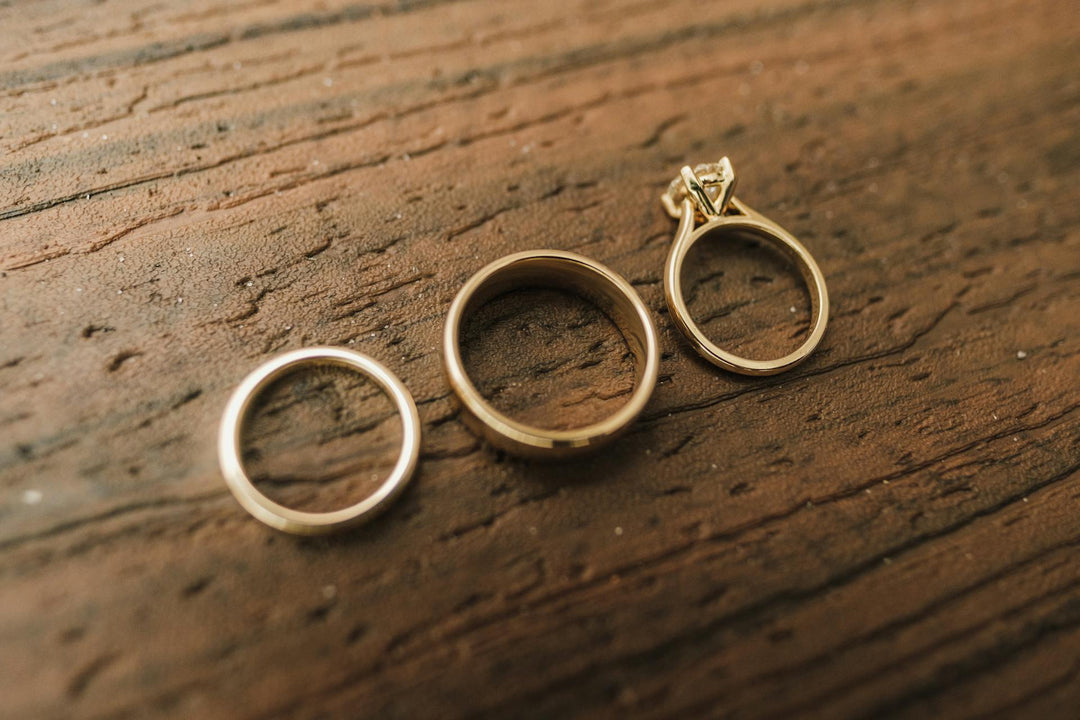1. Introduction
Are you thinking about starting your own jewelry brand? If so, you’re not alone. With the rise of social media and e-commerce, there has never been a better time to launch your own jewelry line.
However, starting a jewelry brand is not a simple task. There are a lot of important considerations and steps that you need to take in order to be successful. In this article, we will walk you through everything you need to know about starting your own jewelry brand. We will cover topics such as market research, product development, branding, and marketing.
By the end of this article, you will have all of the information that you need to launch your own successful jewelry brand. So, what are you waiting for? Let’s get started!

2. Finding your niche
Before launching your own jewelry brand, it’s important to research and determine your target audience. You need to be specific and focus on a particular niche.
The first step is to evaluate your current interests and goals. Do you want to target a certain age range or demographic? Are you focused on crafting jewelry items for a particular occasion or event? Think about how you want to differentiate your jewelry brand.
You should also research potential competition within your niche. Check out what type of jewelry items are currently on the market, get familiar with their designs, and start brainstorming ways to differentiate your own items. It’s important to provide something unique to the market that stands out from other jewelry brands.
Once you have a good understanding of the current jewelry market, you can creatively start developing product designs that target your desired demographic. By researching and understanding the current market, you will be well prepared to start launching your own jewelry brand.

3. Developing your product
Once you’ve done your research and found your niche, it’s time to begin developing your product. Make sure you have items that are suited and tailored to your intended target audience. Doing your research will also help you to come up with new and exciting product designs.
When designing jewelry, consider how you can creatively make your items stand out. Consider adding custom colors, shapes or sizes to your pieces that can help give them an eye-catching appeal. Work with quality materials and be sure to choose colors and materials that will showcase your product and make it memorable.
When developing your product, don’t forget about the importance of quality. Use high-quality materials and craftsmanship. Aim for items that are stylish and will stand the test of time.
Finally, make sure that your products are well-priced. Jewelry items that are affordably priced will be more attractive to customers. Do your research to get an idea of the current market prices of similar products, and ensure that your pricing is competitive.

4. Building your brand
Now that you’ve designed your product, the next step to launching your own jewelry brand is to begin building your brand. A key part of this process is creating a brand identity, which is essential for helping your customers to identify and differentiate your jewelry from others on the market.
Your brand identity encompasses all aspects of your products, including your logo, design aesthetic, mission statement and more. Take the time to craft a unique and interesting identity that resonates with your target consumers and sets you apart from the competition.
You can also use social media to build your brand. Creating accounts on various platforms such as Instagram, Pinterest and Twitter will help you to showcase your product and engage with your target audience. Make sure to post regularly and consistently, as this will help you to build recognition and credibility.
You can also use influencer marketing to help build your brand. Reach out to influencers in your niche who have large followings, and give them free products in exchange for them to showcase and promote them on their social media accounts. This can help increase awareness of your brand and bring in more customers.

5. Creating a website
Creating a website is an important step in launching your own jewelry brand. A website is an ideal platform to showcase and display your products, as well as provide information about your brand and your mission statement. It’s also a great way to build credibility and trust with potential customers.
When creating a website, it’s important to make sure that it’s easy to navigate and mobile-friendly. Make sure to include plenty of visuals, as this will help to showcase your products in the best light possible. You can also create content, such as blog posts and tutorials, to help establish yourself as an authoritative source on jewelry design and trends. You can also add a store to your website, which will allow customers to purchase directly from you.
When you create your website, make sure to include SEO keywords in your content and descriptions to help Google and other search engines find and rank your website. Once you have your website set up, make sure to continue to optimize and update it regularly to keep it fresh and relevant.

6. Constructing an e-commerce platform
Constructing an e-commerce platform is a great way to help launch your own jewelry brand. An e-commerce platform will provide an easy way for customers to browse and purchase your products. Plus, you can integrate it with other third-party services such as shipping and payment processing solutions.
When constructing an e-commerce platform, consider the following:
- Choose a web host that offers the features and capabilities you need.
- Select a platform and software that meets your technical requirements and fits within your budget.
- Customize the look and functionality of your website knowledge of HTML and CSS.
- Make sure your website is optimized for mobile devices.
- Make sure to integrate secure payment processing solutions, such as PayPal or Stripe, to process online payments.
- Set up a customer service system to respond to customer inquiries in a timely manner.
- Enable shipping and fulfillment solutions that provide customers with accurate information about shipping, delivery times, and tracking.
Setting up an e-commerce platform can seem daunting. However, there are many solutions available that can make it easier and help you focus on marketing and growing your brand.

7. Crafting a social media strategy
Social media is a powerful tool for businesses, and crafting a strategy for jewelry brands is paramount for success. A successful social media strategy for a jewelry brand should be designed to create a presence and establish relationships.
Here are a few tips to crafting a social media strategy for your jewelry brand:
- Choose the right platforms: Analyze which platforms your customers prefer and determine which of them will give you the best return on investment (ROI).
- Establish brand identity: Establishing a strong visual identity is key to distinguishing yourself from other brands. Choose a color palette, develop a tone of voice and create a logo that speaks to your brand’s mission.
- Nurture engagement: Encourage conversation and feedback from customers by engaging with them on your social media posts. Develop relationships and focus on creating meaningful conversations.
- Leverage influencers: An influencer can play a key role in building your brand. Find an influencer that resonates with your target audience and use them to increase your reach and awareness.
- Focus on quality: Quality is key to a successful social media strategy. Ensure that every post is well thought-out, relevant, and engaging.
- Create a content plan: Develop a content plan to help stay organized and to ensure that you’re consistently creating content for your channels.
Social media is a crucial tool for businesses, and crafting a strategy for your jewelry brand will provide the opportunity to establish relationships

8. Managing inventory and fulfillment
Managing inventory and fulfillment is an essential part of operating a successful jewelry business. It's important to keep track of the inventory to ensure that products are in-stock and available for purchase. Fulfillment is also crucial as products need to be packaged and shipped to customers in a timely manner.
Here are a few tips for managing inventory and fulfillment for your jewelry business:
- Stay organized: Develop an inventory system to keep track of your products and to ensure that all products are accounted for.
- Automate: Utilize a warehouse management system to automate orders and track inventory accurately.
- Utilize a fulfillment center: Many businesses utilize fulfillment centers to help manage inventory and ship products out to customers quickly and efficiently.
- Invest in reliable shippers: Utilizing reliable shippers such as UPS, FedEx or USPS will help ensure that your products are delivered in a timely manner.
- Track orders: Track your orders to be sure that your products reach their destination on schedule and in good condition.
- Monitor stock levels: Regularly monitor inventory levels and be sure to keep track of which products are in-stock and which are out-of-stock.
- Focus on customer service: Customer service is key and it’s important to provide excellent customer service to ensure customer loyalty and retention.

9. Evaluating your progress
Evaluating your progress is an important step in launching your jewelry business. You can't determine how successful you are without knowing where you started. Tracking your progress and evaluating it regularly is essential to the success of your business.
Here are some tips for evaluating the progress of your jewelry business:
- Review sales data: Track sales data regularly to evaluate how well your products are performing and which products are selling the best.
- Examine customer feedback: Review your customer feedback and see what customers are saying about your products. This can help you identify areas where your products can be improved.
- Compare performance metrics: Track metrics such as return on investment (ROI), average order value (AOV) and customer lifetime value (CLV) to evaluate your overall performance.
- Conduct surveys: Reach out to customers with surveys to get feedback on the customer service your business provides.
- Observe market trends: Stay up-to-date on the latest trends and monitor what other businesses in the same industry are doing.
- Track customer retention rates: Monitor the rate at which customers are returning to purchase from your business. This will give you an idea of how successful your marketing and customer service efforts are.

10. Forging ahead with your jewelry brand
Once you’ve established your jewelry business, it’s time to focus on scaling it up. By finding ways to grow your brand and reach new customers, you can increase your sales and grow your business. Here are some ways you can start forging ahead with your jewelry business:
- Advertise on social media: Use social media to reach new customers and build a following for your jewelry brand.
- Develop an e-commerce website: Having an online presence is essential for success. Consider investing in the development of a website to showcase your products and make them accessible to a wider audience.
- Build relationships with influencers: Partner with influencers to help promote your jewelry brand. Focus on finding influencers with an engaged following that is relevant to your audience.
- Test a referral program: Think about creating a rewards program or referral program to incentivize customers to promote your jewelry brand to their friends and family.
- Create content: Content is an effective way to attract customers and build a community around your jewelry brand. Consider creating video tutorials, how-to guides, interviews, or other content to engage customers.
- Participate in industry events: Participate in jewelry industry events, such as fashion shows and trade shows, to get your brand in front of potential customers.





